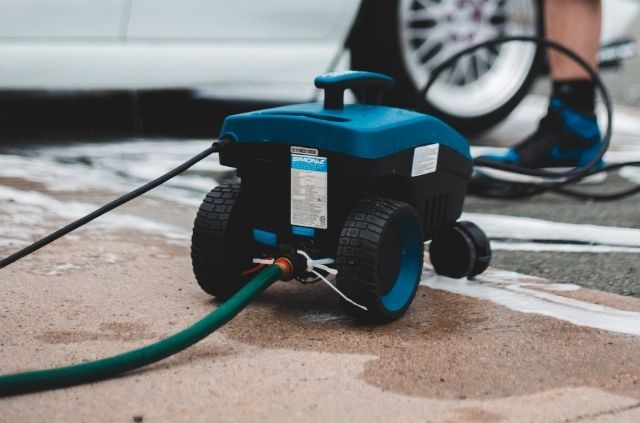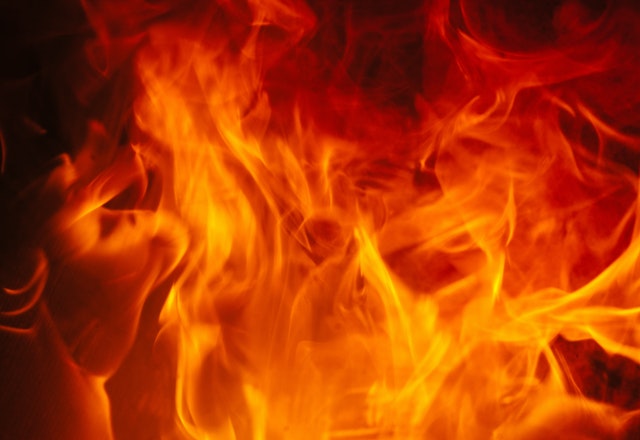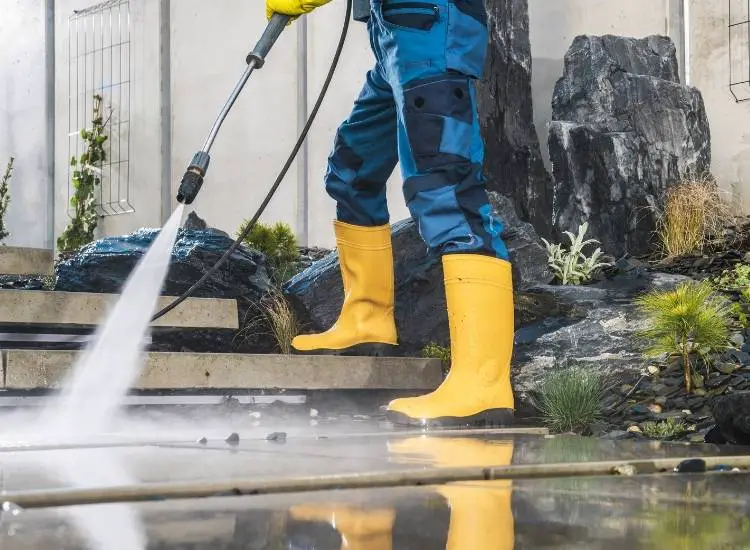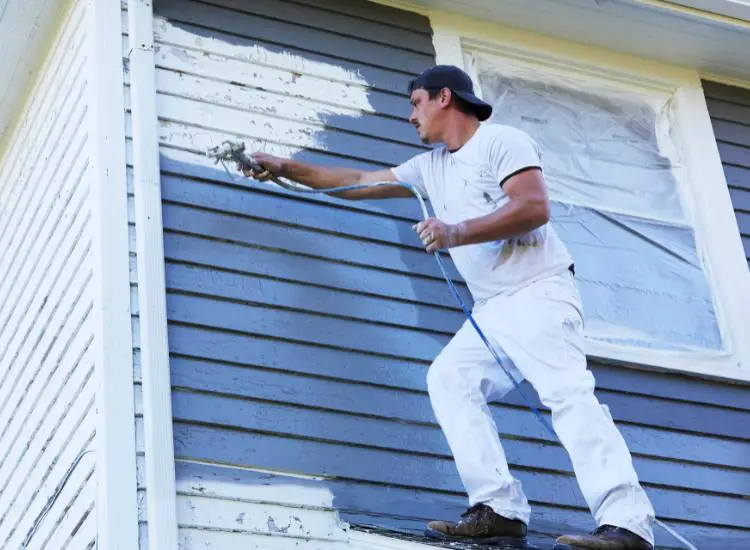How to Fix Pressure Washer Marks in Cement
Pressure washers are efficient cleaning tools that can restore the exterior of your home. These machines are powerful enough to strip paint right off of wood, but gentle enough to wash windows. In this article we will cover how to fix pressure washer marks in cement.
You will need to use a surface cleaner in order to remove marks on a cement surface. Pressure washing this material with the regular spray wand will create ugly streaks and lines. A surface cleaner creates an even spray pattern and won’t cause these issues.
Can Pressure Washing Damage Cement?
You might be surprised to learn that pressure washing can actually cause damage to a hard surface like cement. It doesn’t matter how much PSI your pressure washer has, it all depends on the nozzle attachment.
There are many different types of nozzles that you can use depending on the surface you are cleaning. What separates these nozzles from each other is the spray area. A larger spray area will be safe on cars, windows, and other delicate surfaces.
Nozzles with a tight spray pattern will be the most aggressive and can cause the most damage. These should only be used to remove stains from metal and other hard surfaces.
Nozzle Attachments
0-degree (Red) – This delivers the most amount of water pressure to a concentrated area. It should only be used to clean off tough metal stains. The red nozzle will cut through wood, home siding and other soft materials.
15-degree (Yellow) – Can be used like a scraper to strip off paint, or grease on hard exterior surfaces. The yellow nozzle can also work to clean second story floors from the ground level, as the water pressure will decrease with distance.
25-degree (Green) – Ideal for cleaning dirt, grime, and mildew on exterior surfaces. The green nozzle is safe enough to clean home siding, sidewalks, and metal furniture. It will deliver plenty of cleaning power without causing any damage.
40-degree (White) – Creates a wide spray that allows you to clean windows, vehicles, and other objects around the home. The white nozzle has more cleaning power than a traditional garden hose but is still safe on those delicate surfaces.
Detergent (Black) – Some pressure washers come with an attached canister that holds soap. The black detergent nozzle has the capability to evenly spread out soap when in use. This is also a low-pressure nozzle and is considered safe.
How to Fix Pressure Washer Marks in Cement
As we briefly mentioned above, pressure washer marks in cement are caused by the spray wand. This device lacks the capability to clean the surface without causing ugly streaks. You will need a surface cleaner in order to remove these marks and restore the cement surface back to normal.
1. Prepare the Area
Before starting any outdoor project, it’s important to prepare your work area. Put away any gardening tools, patio furniture, and children’s toys. It also helps to move any vehicles if you are working on a cement driveway, as you don’t want these items to get in your way during the cleaning process.
You should also gather all of the equipment needed for the job before beginning. You will need a pressure washer, surface cleaner, and a high quality detergent if you plan on using one. Even though you can pressure wash in the rain, it helps to work on a sunny day so you can avoid getting your gear wet.
2. Remove Surface Debris
Once the area has been cleaned, you can move on to removing any surface debris. Chances are the area you’re working in isn’t perfectly clean. Use the pressure washer and the black nozzle attachment to rinse of the cement. Follow an even pattern and use back-and-forth motions with the wand.
This helps remove any loose stones, dirt, or grass from the cement. You don’t want any of these contaminants on the surface before you start cleaning. It’s much easier to use the surface cleaner on an area with none of these debris. Avoid using an aggressive nozzle, as this will cause streaks in the cement.
3. Use a Surface Cleaner
After you have sprayed off all of the surface debris, you can use the surface cleaner. This device gets attached directly to the end of the wand and helps evenly spread water around when cleaning. It’s much more efficient at cleaning flat surfaces compared to the nozzles, because it won’t leave behind lines and streaks.
Slowly clean the cement using back and forth motions. It helps to work in small sections at a time, so you don’t miss any areas. Begin with horizontal lines and follow up with vertical lines to ensure the surface is clean. This process will remove any ugly marks in the cement that were caused by an aggressive spray nozzle.
4. Try Soap
Soap won’t necessarily fix pressure washer marks in cement, but it can help if you’re working with a dirty surface. A dedicated detergent can remove mold, mildew, and other kinds of organic growth from cement. Most pressure washers made today come with a built in canister that allows you to easily hold the soap.
It’s important that you always use a detergent specifically made for pressure washers. You never want to put a hard chemical like bleach in the canister, as this product can eat away at the internal components of the machine and cause damage. Plus, bleach is also harmful to your skin – which is why you should avoid it altogether.
5. Rinse the Surface
You can finally rinse the surface once you’ve successfully removed all of the marks in the cement. Remove the surface cleaner and attach the black nozzle that will give you the widest spray pattern. This is an important step because you don’t want to leave any soap on the surface, as it can dry in the sun and cause discoloration.
Other Tips
Work with gravity – Before using the surface cleaner, make sure you find out where the low spots are on your cement surface. It’s important to clean these low spots first and work with gravity (not against it). If not there’s a good chance you will be fighting with water during the entire cleaning process.
Don’t rush – Anytime you’re attempting to fix a problem, you always want to slow down and avoid rushing. If you’re trying to remove pressure washer marks in cement it’s critical that you slow down and take your time. Even though surface cleaners work very well, they can cause marks if pushed too quickly.
Follow a pattern – You will need to follow a consistent cleaning pattern for two reasons. For one it will keep you on track and prevent you from losing where your spot was on the surface was. But it’s also a good method to make sure that every square inch will be cleaned. You can overlap areas with the surface cleaner for the best results.
Conclusion
Hopefully this article has taught you how to fix pressure washer marks in cement. Most of the time these annoying streaks are caused by improper technique.
You never want to use a nozzle attachment when cleaning a flat surface, as this will almost always cause marks. Make sure to pick up a surface cleaner to solve this problem and avoid it from happening in the future.
Further Reading
Search Terms
- How to fix pressure washer marks in cement
- Can a pressure washer damage cement?






